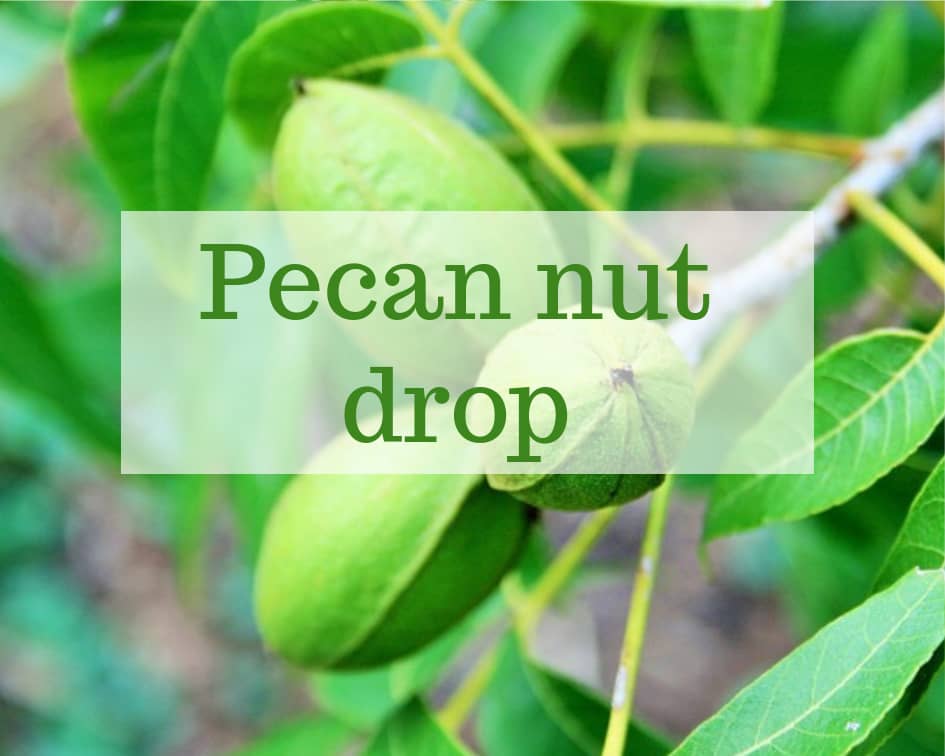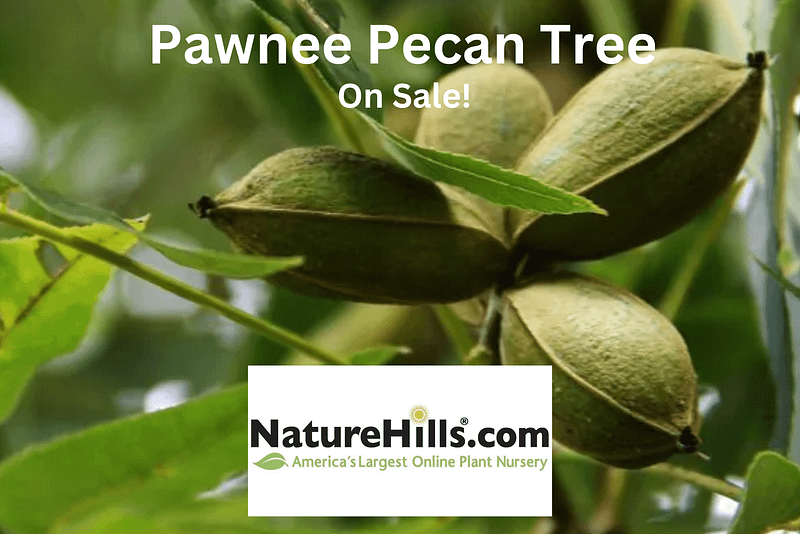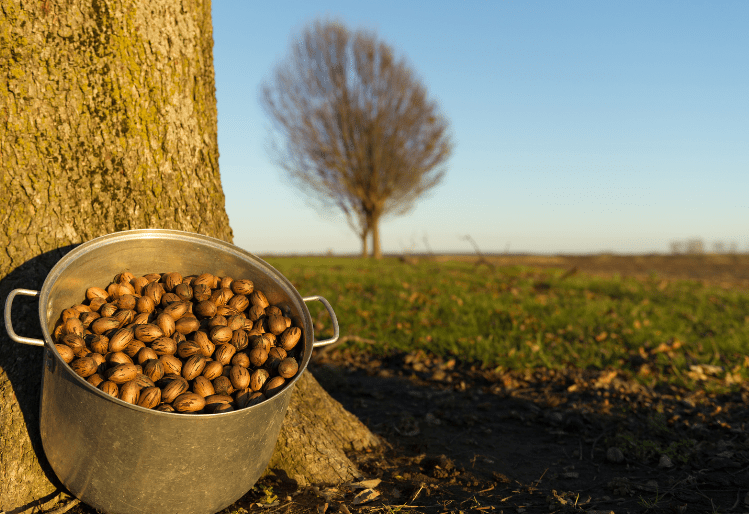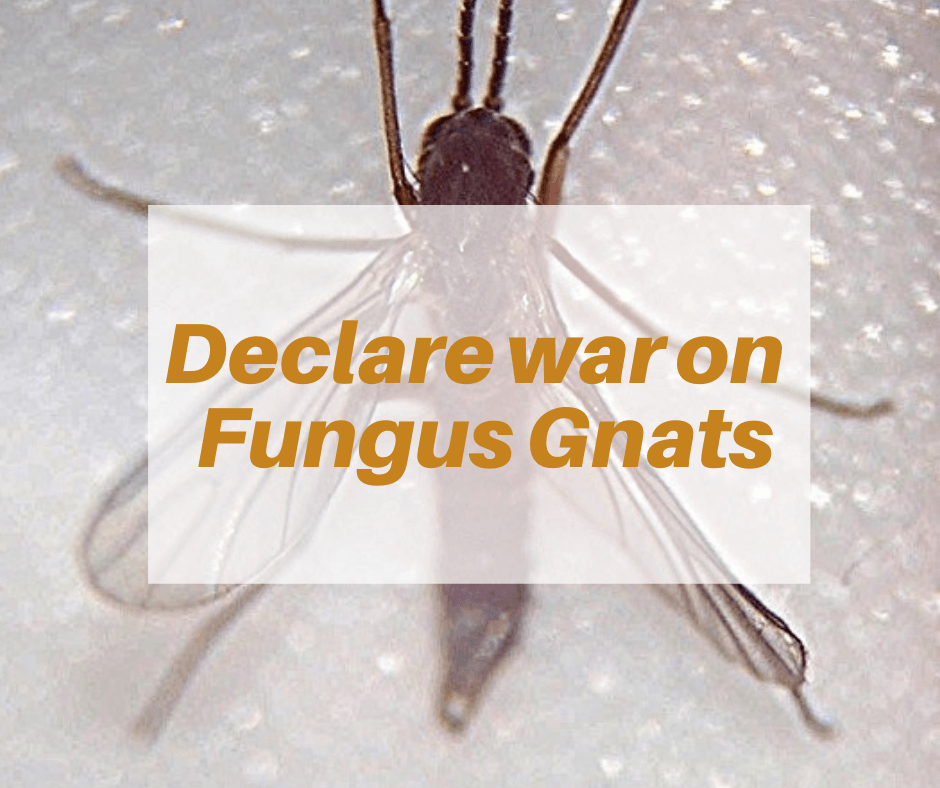This post may contain affiliate links. As an Amazon Associate we earn from qualifying purchases.
Pecan tree dropping nuts? Read on to find out why.
Gardeners new to growing fruit and nut trees typically panic around the early part of June. This is when “June drop” occurs – the natural shedding of excess fruit from a tree.
University of California master gardener Jim Borland calls it “a self-regulated thinning process that keeps the tree from bearing too large of a crop.” While the June drop is a natural phenomenon, there are a number of additional reasons for nut drop in a pecan tree.
Poor Pollination
If the tree experiences an additional drop, either before June drop or in July, suspect poor pollination as the reason. Pecan trees depend on the wind for pollination. Ideal pollination occurs when pecan trees are planted in close proximity to one another. The experts at New Mexico State University suggest a distance of 30 feet.
When it happens in early June, the nuts are so small you may not even notice they’ve fallen from the tree. During July, however, they are larger and it’s more obvious that the tree is shedding fruit. Planting different varieties to assure cross-pollination solves the problem.
Insects
If the pecan tree is shedding fruit during late May, suspect an insect infestation. Pick up a few of the fallen pecans and inspect them for small holes. These are caused by the pecan nut casebearer (Acrobasis nuxvorella).
The adult grey moths, active only at night, lay their eggs on the nuts and the hatched larvae tunnel inside. Insecticides control the larvae but the product must be applied before the larvae enter the nut.
Scout the tree frequently during pollination and just after, looking for the small white eggs on the pecans.
Use an insecticide that contains spinosad. Monterey makes an OMRI certified product (certified organic) and it’s available on Amazon.com. Or try the biological solution, Bacillus thuringiensis. Bonide sells one at Amazon.com that is labeled for use on pecan trees.

How much water does a pecan tree need?
Water-stressed trees typically drop their fruit in late July and early August.
“A [mature] pecan tree needs about 100 to 200 gallons of water per day, from April through October, according to extension horticulturists with Texas A&M University.
Sounds like a ton of water, doesn’t it? Here’s an explanation: “One inch of rain falling on one acre of land is equivalent to 27,154 gallons. That means one inch of rain will provide a one-week supply of water to a mature pecan tree in the heat of the summer,” according to growers at Royalty Pecan Farms.
For us backyard gardeners, let’s simplify it. Two inches of water, supplied slowly at the tree’s dripline every week, will provide the pecan tree its water requirement.
Nutritional Deficiencies
Potassium deficiencies are a common problem in pecan trees grown in the southern United States, leading to poorly filled nuts and abundant nut drop. The cure for potassium deficiency in the pecan tree isn’t a quick fix and it may take a season or two to get the level adjusted. Adjust the ratio of nitrogen to potassium in your fertilizer to 1:1.5.
If you need help with the calculations, the Center for Turfgrass Science at Penn State University offers a walkthrough, here.
Nitrogen and zinc are common deficiencies, depending on region. If you suspect that nut drop is happening because of sporadic fertilization, do yourself a favor and have your soil tested (purchase a soil testing kit here). Only then will you know what the tree is lacking and how much to apply.
Get the fertilizer applied just before bud break. If you want a more specific date, contact your local cooperative extension service. We offer a list for all 50 states, here.
Mention of a fertilizer or pesticide, or use of a pesticide or fertilizer label, is for educational purposes only. Always follow the product’s label directions attached to the container you are using. Be sure that the plant you wish to treat is listed on the label of the pesticide you intend to use. And observe the number of days between pesticide application and when you can harvest your crop.






